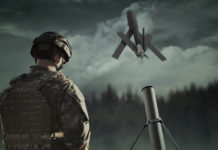The employment of different types of seekers enables planners to take advantage of environmental or man-made effects, such as the use of electronic deception, various obscurants or difficult weather conditions. This capability was proven during OIF, when a heavy dust storm erupted over Iraq. It was spotted by weather satellites well before it reached the area. The ability to predict its effects and duration were realized by the US operational planners; they shifted more non visual assets including electronic based sensors (SAR/GMTI), such as Joint STARS Synthetic Aperture Radar (SAR) aircraft, Rivet Joint SIGINT electronic intelligence platform, and the Global Hawk high altitude UAV to continue and track the Iraqi forces. While the Iraqis tried to move their forces to reinforce the Medina Division south of Baghdad their communications and movements were spotted and accurately located by SIGINT and Ground Moving Target Indicator (GMTI) sensors and could be engaged by radar- and GPS-based weapons, such as Longbow, JDAM and other assets which are designed to operate under all weather conditions.
Precision Strike Guidance Technologies:
| Technology | Key features |
| Semi Active Laser Homing | Very high precision, vulnerable to weather & countermeasures |
| Electro-Optical (VIS / IIR) | Autonomous, flexible retargeting with datalink |
| GPS /IMU | Autonomous, all weather |
| Scene Matching (EO) | Autonomous, pasive |
| Terrain Mapping | Autonomous |
| Active Radar / MMW Radar | Autonomous, engagement of selective moving targets engagement, all weather capability |
| LADAR | Flexible targeting, Autonomous, selective targeting |
Additional parts of this article:
- Precision Strike Weapons
- Precision Strike Concepts
- Transformation of Air Strike Operations
- Net Centric Precision Strike Weapons
- Battle damage Assessment Capabilities
- Precision Strike Systems
- Precision Guidance Concepts
- Modern Bombers Applications for Conventional Warfare
- Precision Attack in Urban Warfare
















